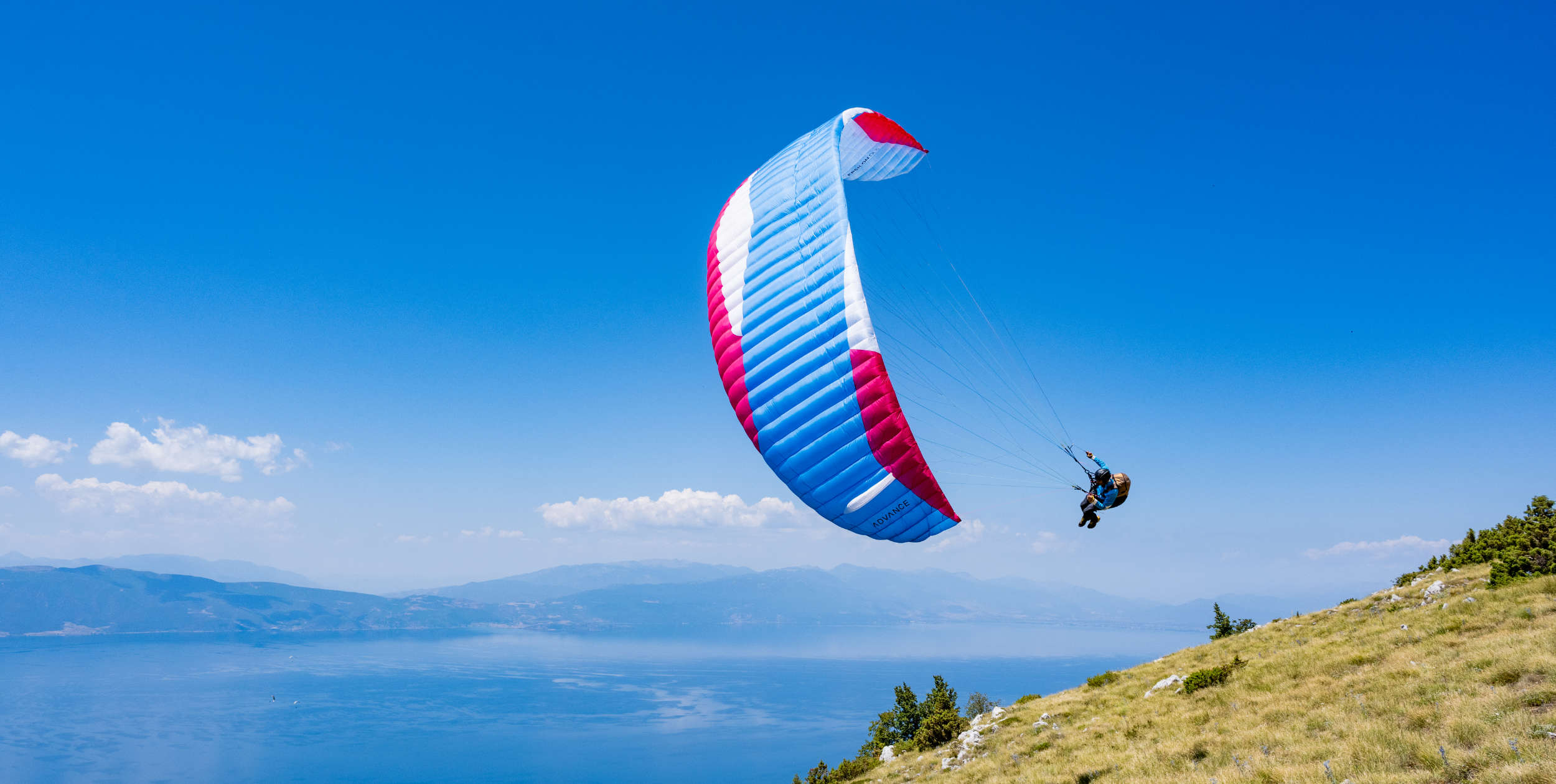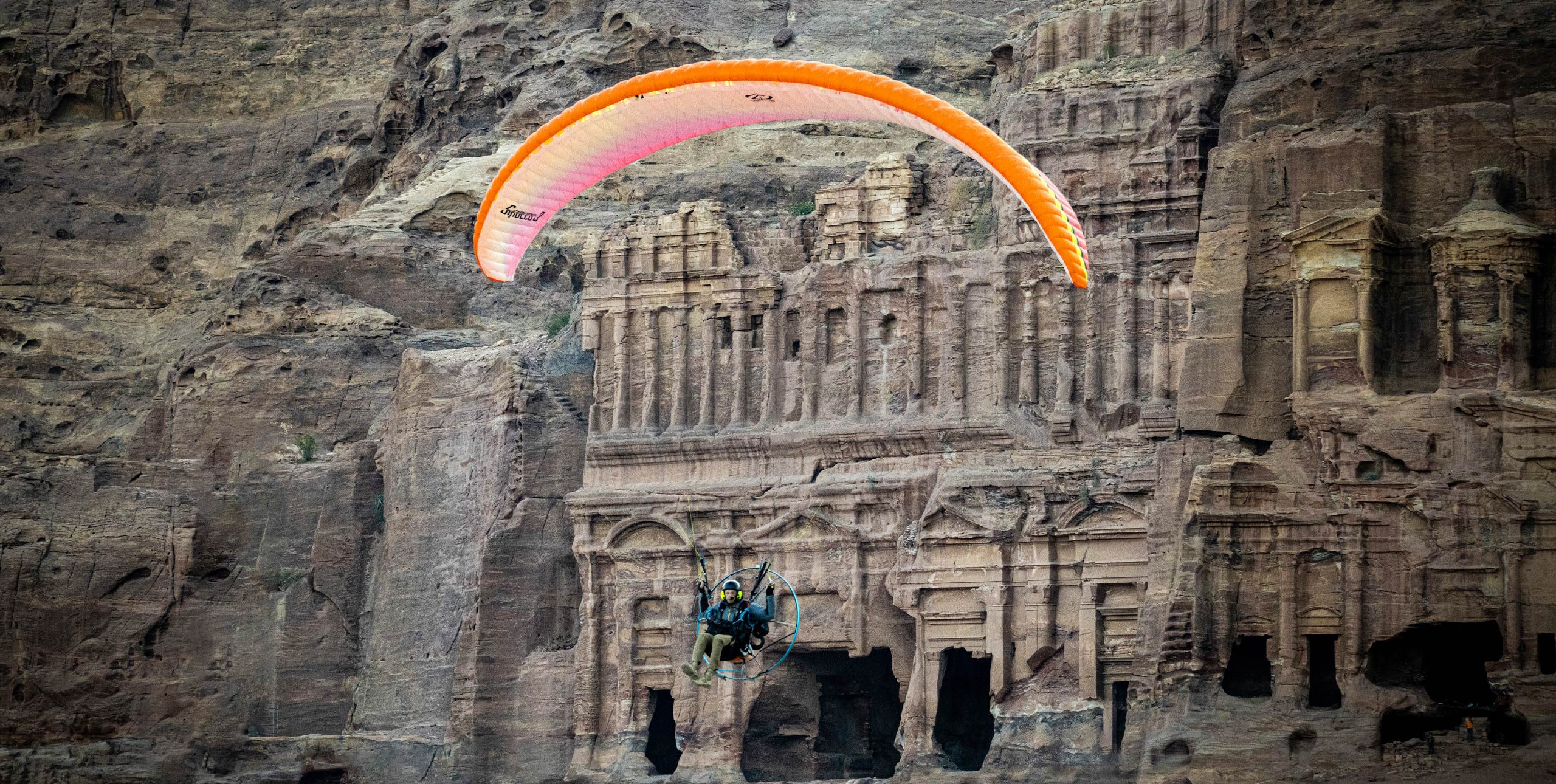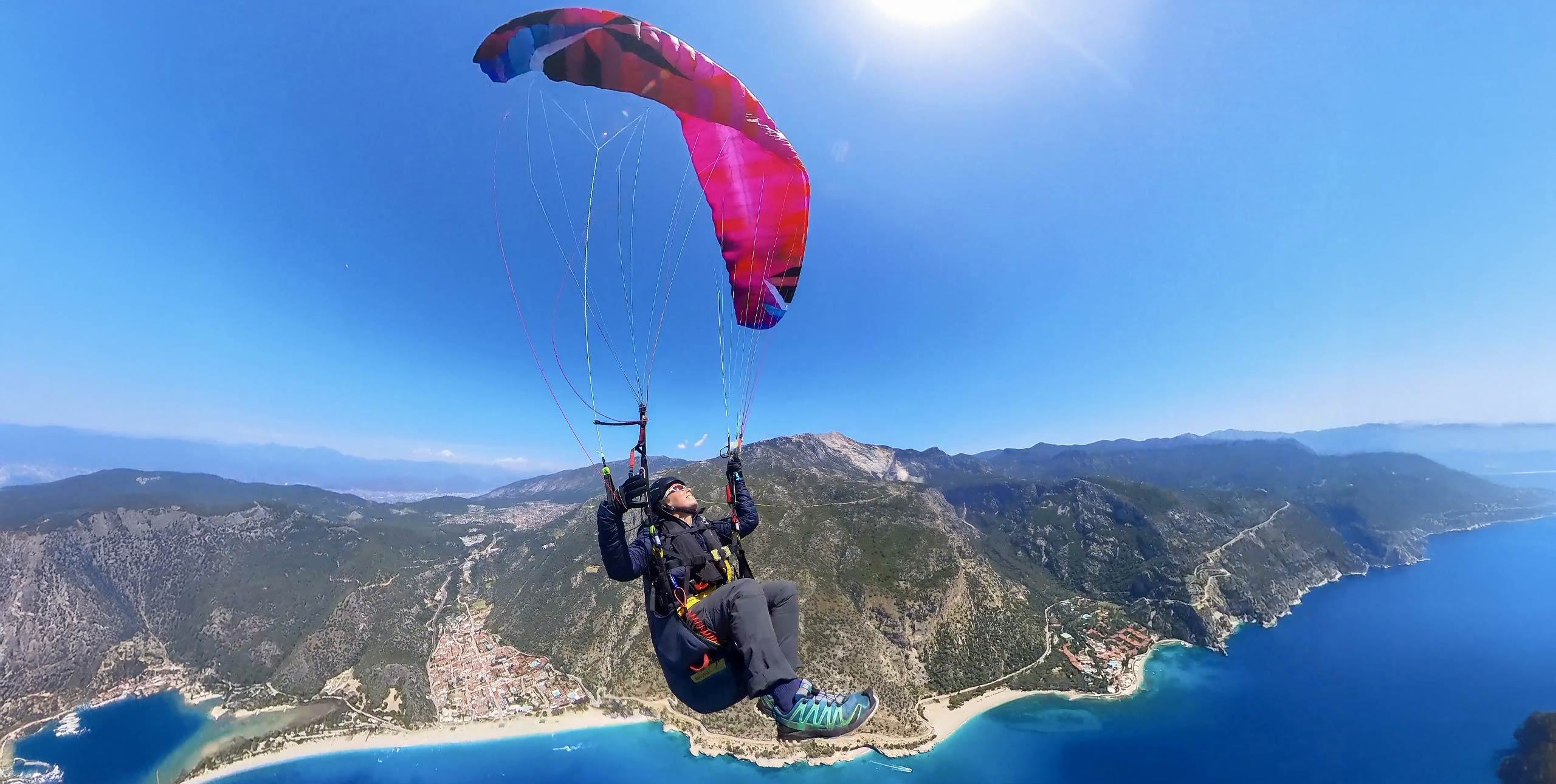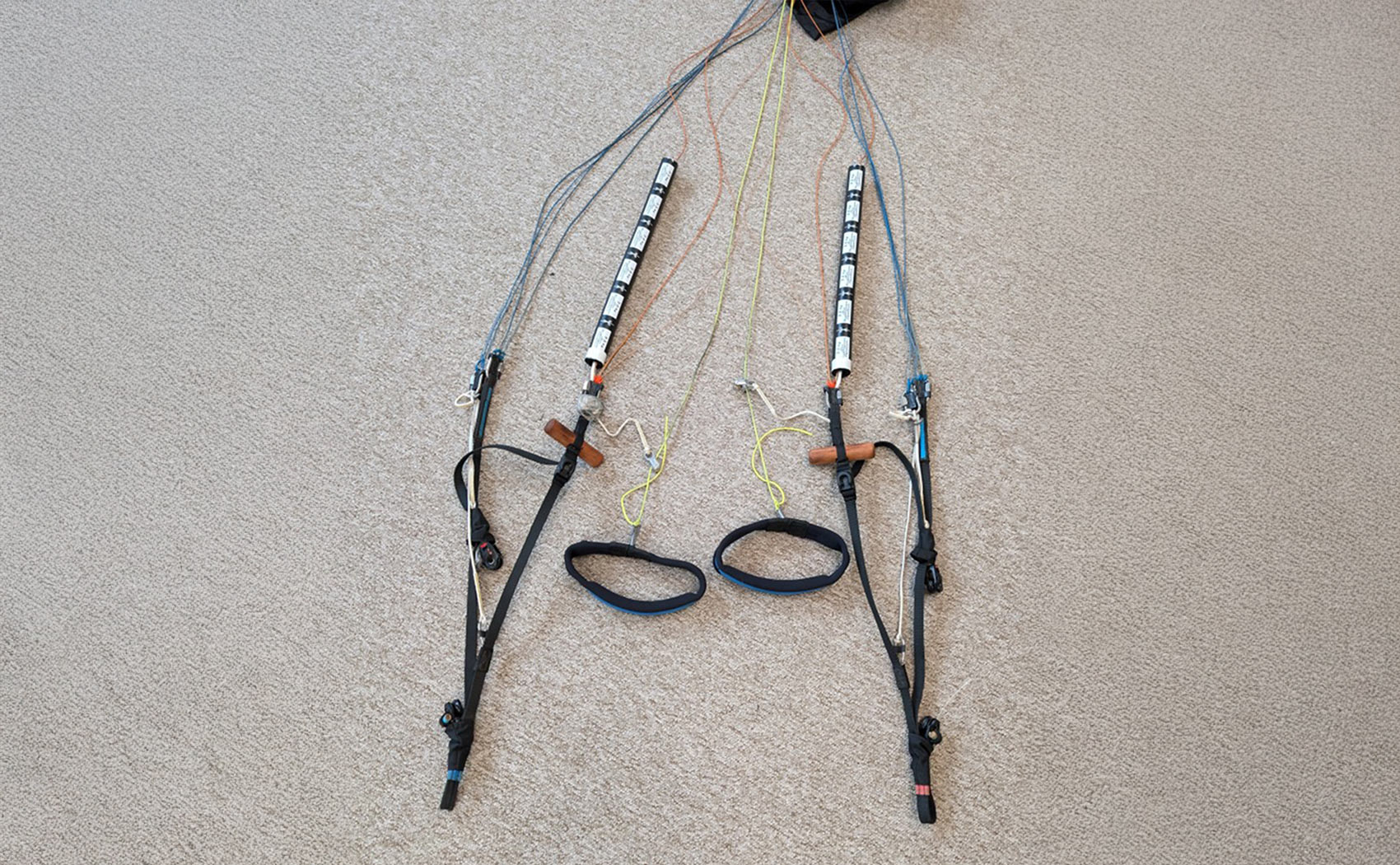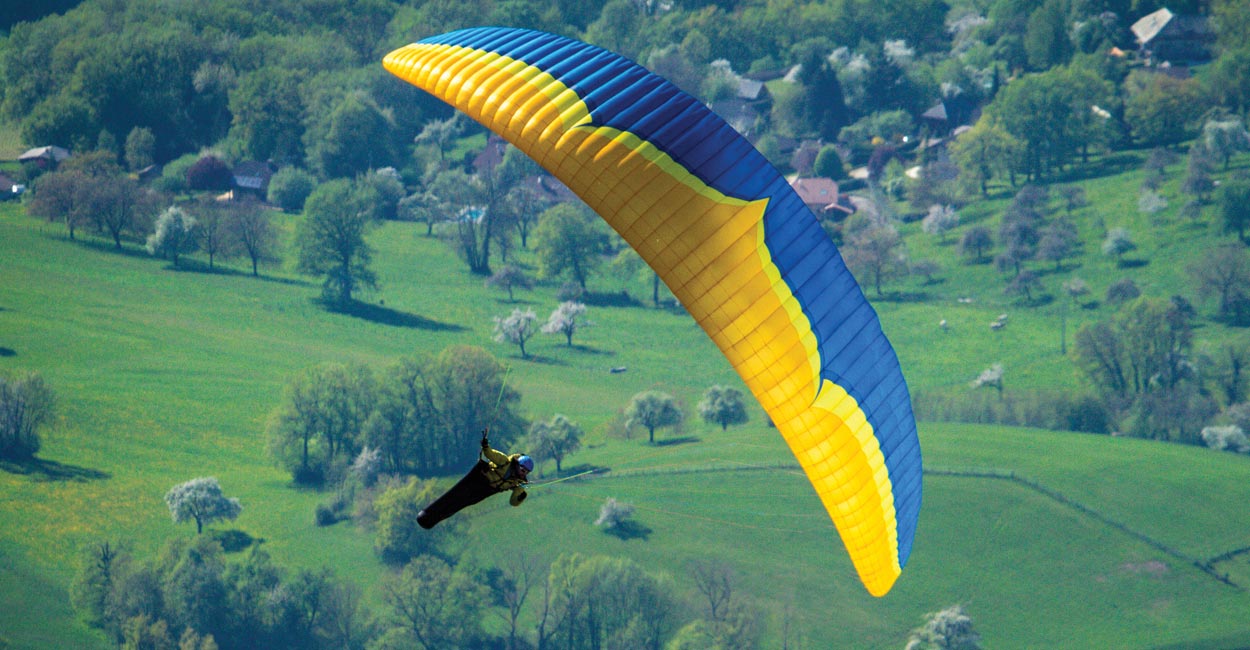
For many pilots ‘high-B’ paragliders are the perfect option. They offer a high level of security alongside loads of usable XC performance. Marcus King asked test pilot Russell Ogden about the design work behind Ozone’s new Rush 5.
(Read the Rush 5 review here)
Russell, where do you get your brief for designing a wing like the Rush 5? Do you look at what else is happening in the market or at what you have done before?
Each year every glider gets more difficult. But we take ideas from all the other projects that we’ve worked on, from comp wings to school wings. In that process we gather information and learn lots – some of it filters down and some of it can filter up.
With something like the Rush 5, aimed at ‘high-B’ pilots, do you set out to be the best in the class for performance, or are there other criteria?
We really aim it at what we want. We make gliders that the team enjoy flying and make us happy and give us that special feeling. Of course we do look at the competition, but it’s not something that really drives us. It’s more about improving our previous product and making the best wing that we can.
What characteristics do you look for in a high-B?
Well the Rush has to tick many boxes. It’s a wing that is designed to be safe and forgiving in its EN-B category, so it has to fit inside its certification. But at the same time we want to give a solid intermediate pilot a wing that is really good fun and enjoyable. We try to keep our wings as solid as possible so they are structurally very strong. In doing so it makes the wing a little bit more difficult for certification purposes, but makes it much more pleasant to fly in strong thermic conditions. So yes, it’s a challenge to make the wings fit in the category but still be good fun and have high performance.
Do you think performance gains have slowed? Was it hard to make the Rush 5 better than the Rush 4?
It’s always hard to make it better. It seems the gains are becoming more difficult. The costs are going up because the structure, materials and construction are more complex. For example, the Rush 5 has triple transversal shaping. But performance is always really important. Performance allows us to fly further and better. And just small gains in performance can make big differences in efficiency. It can be the difference between catching that climb or falling out the bottom and landing.
What key differences would a pilot notice between the Rush 4 and the Rush 5?
There are plenty, but what we didn’t want to compromise is aspect ratio: we wanted to keep a moderate aspect ratio as we believe it is important for the overall comfort, ease of use and safety. We achieved performance in other areas. We are constantly looking at ways to really clean the leading edge so we’ve used triple 3D shaping in the nose. We’ve also cleaned up the trailing edge and made internal structure changes that solidify the glider in turbulent air.
In flight, with the very solid leading edge I found it was a bit harder to map the thermals at first and I had to get used to it, do you think that’s a fair comment?
It’s always about finding a compromise and a balance. If you loosen up the sail, if you reduce the tension in the straps you can make a wing more alive and more “feely”. But that can be understood by some pilots as too much information while for others it’s perfect.
We are trying to make a wing that has a broad appeal and we do all personally like wings that are very strong. The solidity is also good for performance. But it does come down to personal preference.
How does the Rush 5 compare with the Delta 3?
The Rush 5 is the little brother of the Delta 3. A lot of the things we learnt in the Delta 3 development, which took a long time, have been used in the Rush 5. The Delta has a bit more aspect ratio. If you were to fly both wings in calm air the demands are very similar. But the Rush 5 has a slightly longer brake range making it more forgiving. If you take a big collapse and slightly over input, you are less likely to get yourself in trouble by inadvertently stalling what’s left of the wing. In frontals the Rush opens a little quicker. But it’s all pretty similar. The biggest difference is the management of the increased aspect ratio in turbulent air.
For me it feels similar to the Delta 3 on glide, although not quite as driven.
Yes it’s a bit more mellow, a slightly softer feel but that firmness and rigidity of the sail also gives a sporty feel. That gives the flying pleasure. It was a good fun project to work on: the [six or seven] prototypes we had were feeling really nice and it’s a safe wing – easy to test and develop.
What was the hardest part designing it?
Well with the Rush 4 we used folding lines for certification, which have subsequently been banned. So we had design issues we had to get over without compromising the solidity of the wing. So that posed its own problems. From a trimming point of view it was relatively simple. We were fortunate to have time to spend three weeks just working on the trim of the brakes. So we could really find the perfect mix of roll and yaw. We always aim to have a wing that has easy roll and yet is yawing in the turn so it can stay flat and efficient above the head.
Do you have any advice for pilots who are moving to a Rush 5 from a lower EN B?
Just go and enjoy it. I think the handling is there in the precision but you can really use the second part of the brake range as well, deeper down to create bank and roll. The most common mistake I see intermediate pilots make is that they are very gentle with the brakes and not really inputting the glider as positively as they can do. Of course this isn’t such a bad thing and better than being heavy handed. My advice would be to use the brakes and use the speed range of the glider when it is safe to do so.


